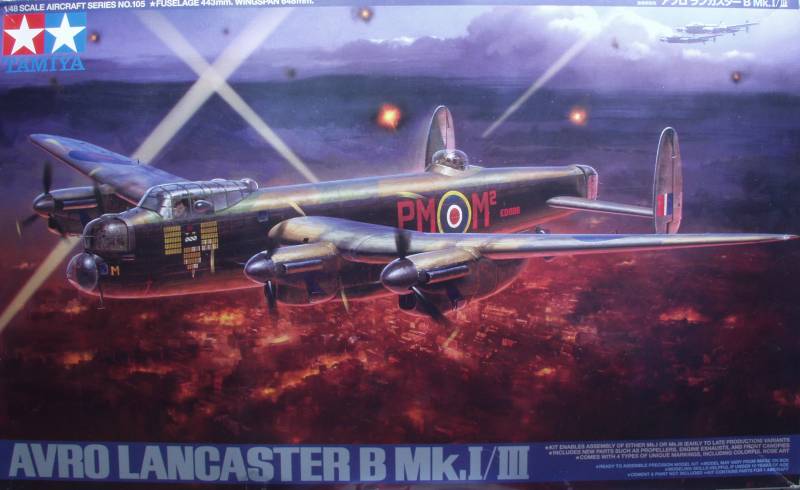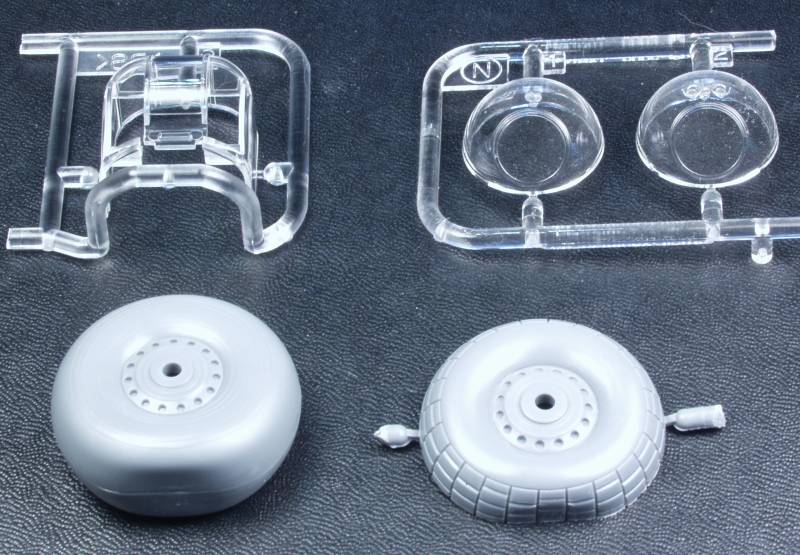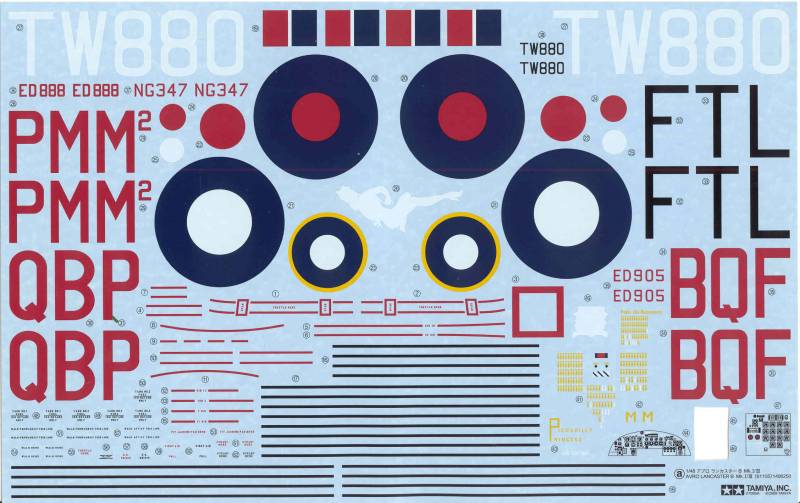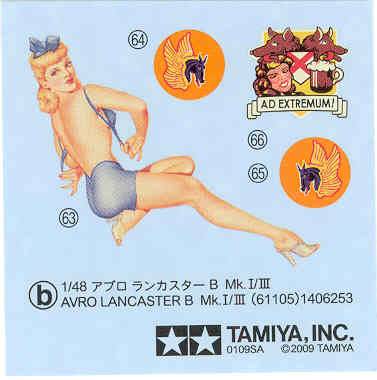
Lancaster B III

The Avro Lancaster is well known and history can be found almost everywhere so I'm not going to go into great detail here concerning the history and development of the type. What I am going to do is quote what William Green said in his volume The Famous Bombers of the Second World War "Many aeroplanes employed by the combatants of the Second World War became famous; few were truly great. Greatness is a quality which cannot be instilled in an aircraft on the drawing board or the assembly line. A great aircraft must have that touch of genius which transcends the good, and it must have luck - the luck to be in the right place at the right time. It must have flying qualities above the average; reliability, ruggedness and fighting ability, and, in the final analysis, it needs the skilled touch of crews to which it has endeared itself. All these things the Lancaster had in good measure. It was also remarkably adaptable and a superlative bomber on every count, and of all the great aeroplanes which fought out the war, there are many who would insist that this was the greatest".
The BIII Variant
The B III Lancaster was
essentially the same as the B I, the primary difference was
the use of the Packard built Merlins in stead of Rolls-Royce.
Although the Packard built engines closely resembled its
British progenitor, it was built to American standards and
measures. Production machines also incorporated a few other
differences, such as a modified nose perspex to improve the
view of the bombardier. Both Lancaster I's and III's continued
in production side by side. For the most part A.V. Roe
concentrated on the Mk III building 2,774 of these to only 896
Mk I's. All Vickers- Armstrong's Lancasters, 535, were Mk I's
as were the 150 built by Austin Motors, 944 by
Metropolitan-Vickers and 919 by Armstrong Whitworth.
Metropolitan-Vickers also built 136 Lancaster III's and
Armstrong Whitworth built 110.
The Kit

In
2009 Tamiya re released the BI/BIII kit which includes some additional
parts not included in the original kit.
The
new
kit includes optional wheels (smooth or square
tread) that are weighted, shrouded or unshrouded
exhausts, and choice of early/late style
propellers, nose glazing, rear turret
glazing, decals and painting guide for 4
Royal Air Force aircraft. They also apparently did
at least some work on the tooling as the kit seems
to fit together better than the first release. It
is also molded in light gray plastic which to me
is much easier to work with and doesn't seem as
brittle. All of the rest of the parts will be
identical to the original kit so I will not
be showing photos of all the parts which you can
see in the BII review here.
Some of the new parts are show below. The new rear
turret glazing for the later 2 gun turret, the 2
different bombardier nose glazings and the smooth
and treaded main wheels.

The Decals
The decals are all new for this release and include marking for four different aircraft; # ED888 of No. 103 Squadron, a MkIII; #ED905 of No.550 Squadron, a MkIII; # NG347 of No. 424 Squadron, a MkI; #TW880 of No. 35 Squadron, a MkI. All the decals are on one large sheet except for some nose art which is on a separate sheet. Note" in the photo below the radio decal is missing as I "borrowed" it for use elsewhere.


The instructions are in the form of a 16 page booklet which includes multilingual histories, the usual warnings and precautions. Colors are called out in Tamiya numbers. There are 23 assembly steps and lots of notes concerning different options and 3 pages of painting and decal instructions.
After Market Goodies
Eduard makes a lot of photo etch sets to dress up this kit including a Big Ed set that will easily double the cost of the kit. There are also individual sets for the interior, exterior, bomb bay and others. True Details has replacement wheels that are weighted but other wise appear identical to the kit parts. If you go to any of the online hobby retailers and search for "Lancaster" you should be able to locate most of them although at any one time, many may be out of stock. Personally I'm only planning on using Eduard's color zoom set for the cockpit and a Paragon bulged bomb bay set.
Conclusions
The Tamiya kit, in spite of its age has held up quite well and builds in to a stunning replica of this famous aircraft. It does not go together like their current releases but the fit on this revised release seems better than the older kits. It also now includes parts that were missing from the original release that prevented you from building a correct early and late version aircraft. Plus it is molded in gray plastic which I think is much easier to work with. Other than the large parts count there is no reason most modelers with a moderate amount of experience should have any difficulty building a nice looking model from this kit. Recommended !
Links to kit build or reviews
Build / Reviews can be found here, here and here.
References
Famous Bombers of the Second World War by William Green
Flying Zone Publications "The Lancaster Explored" CD